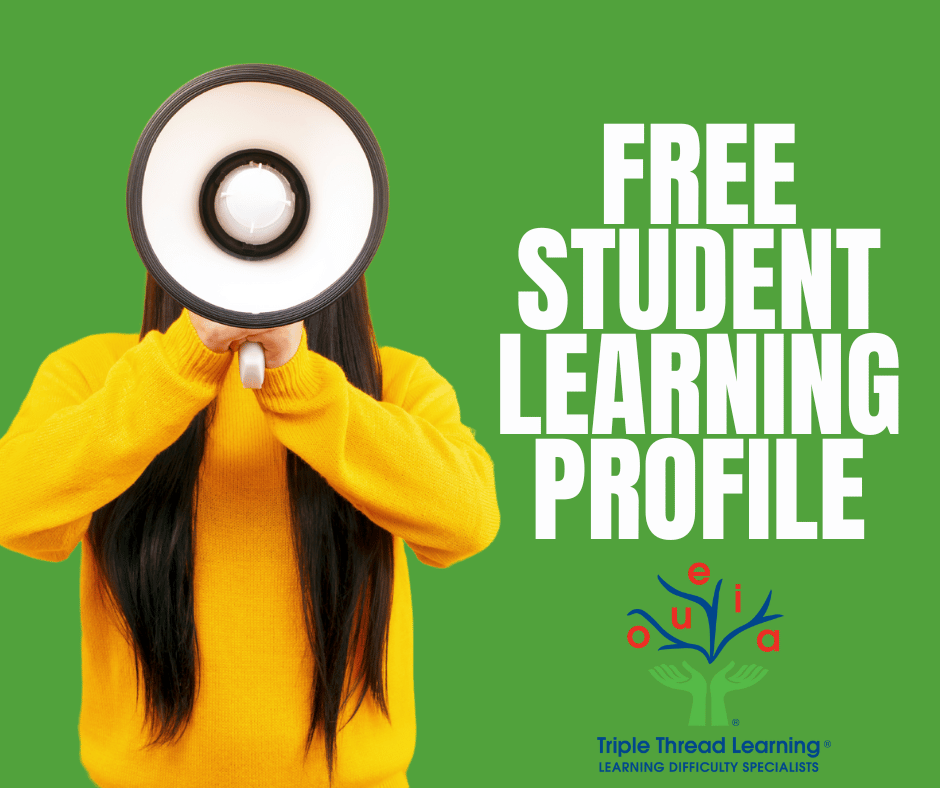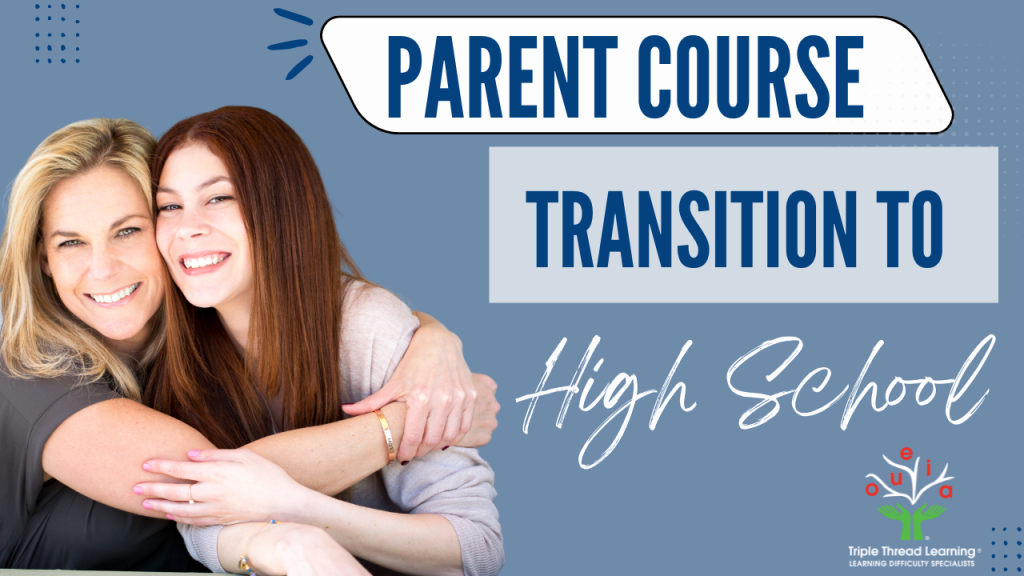Starting high school in Australia is one of the most significant milestones in a child’s education. Even if your child has been at the same K–12 school, moving into Year 7 feels like stepping into a whole new world. Suddenly, there are new subjects, different teachers, a larger timetable, new classmates, bigger spaces, and unfamiliar routines.
For many children, this shift is an exciting development. For others, particularly those with literacy difficulties, learning challenges, or anxiety, the leap can feel daunting. As parents, we often spend the summer holidays worrying:
- Will my child be able to cope with the workload?
- Will the teachers recognise their learning needs?
- How will they manage socially with new friends?
- What if they feel lost, anxious, or overwhelmed?
The good news? You don’t have to have everything perfectly sorted before Day 1. With some practical preparation and gentle reassurance, you can alleviate that worry for both yourself and your child, making the Year 7 transition smoother.
Why Year 7 Feels So Different in Australia
The transition to high school in Australia is more than just a change of classrooms; it’s a significant cultural shift. In primary school, one teacher usually knows your child well and teaches them across most subjects.
In secondary school, a Year 7 student may have 10 or more subject teachers, each with 150+ students to get to know.
That means:
- Less one-on-one attention from a single teacher
- More responsibility on your child to manage themselves
- New routines like lockers, timetables, and moving between classrooms
- Higher expectations for independence and organisation
For children who struggle with literacy or learning, these changes can magnify challenges, which is why parent support during the high school transition is so crucial.
Common Challenges Families Face in the Year 7 Transition
Every child’s experience of starting high school is unique, but these are the most common struggles parents report:
- Information overload: Orientation days often feel like a blur.
- Navigating larger campuses: Worry about getting lost is a common concern.
- Friendship worries: Adjusting to new classmates or losing old connections.
- Academic jump: Keeping up with homework, literacy, and subject changes.
- New routines: Managing multiple books, subjects, and classrooms.
Understanding these pain points means you can prepare your child with strategies to cope.
Practical Strategies to Support Your Child in Year 7
Here are some practical and parent-friendly transition tips to help your child feel more confident and supported:
1. Create a One-Page Profile
High school teachers are busy. A one-page student profile gives them a snapshot of your child without overwhelming them.
Include:
- Strengths and interests (e.g. “loves art and hands-on learning”)
- Barriers (e.g. “finds extended reading tasks difficult”)
- Helpful strategies (e.g. “benefits from clear step-by-step instructions”)
- Student voice (“I work best when…”)
This ensures your child’s needs are understood early – a simple yet powerful Year 7 transition strategy.

2. Make Orientation Stick
Orientation is valuable but overwhelming. You can help by:
- Visiting the school again in Term 4 or over the summer
- Creating a photo booklet of key places (canteen, office, library, classrooms)
- Practising walking from the gate to the classrooms
- Using the timetable with your child so they feel familiar before Day 1
3. Ease Back into Routine
The long summer break makes it more challenging to resume routines. A week before school:
- Reinstate bedtimes and wake-up times
- Practise packing the school bag and checking equipment
- Do a practice run of the school journey (bus, train, walk)
- Introduce a visual timetable for mornings
These simple steps reduce back-to-school stress for both kids and parents.
4. Reassure and Normalise the Nerves
Transition isn’t about having everything perfect – it’s about building resilience.
- Let your child know everyone feels nervous about starting Year 7.
- Share your own first-day stories.
- Celebrate small wins, not just academic success.
Confidence grows from reassurance, not pressure.
Why the “Perfect Transition” Doesn’t Exist
It’s easy to want the high school transition to be seamless, but bumps are a regular part of the process. Friendships may shift, homework may seem challenging, and kids might need time to find their rhythm.
The real goal is for your child to:
- Feel supported at home and school.
- Build self-confidence
- Learn how to manage challenges gradually.
Extra Support for Parents
If you’d like more structured guidance, our Parent Online Course, “Transition to High School” is designed to support you through this stage:
What’s Inside the Course?
Knowledge is Power – Trust Yourself
Learn why a simple learning profile can make all the difference, how to include your child’s voice, and how to focus on strengths as well as challenges.
Orientation – The Tsunami of Information
Discover what to prioritise during orientation, how to set up key meetings, and why extra transition time matters.
Practical Organisation
Timetables, books, assignments, homework, fatigue… learn practical systems that actually work for kids with literacy needs.
Resources to Deep Dive
- Understand the Disability Standards, NCCD, special provisions in your state, and where to find the best parent and advocacy resources.
Learn more about the Parent Course: Transition to High School

Quick Checklist: 5 Things to Do Before Day 1 of Year 7
- Create a one-page profile with your child
- Revisit the school or make a photo booklet
- Reintroduce routines early in January
- Practise the school journey (bus, train, or walk)
- Please remind your child (and yourself): it doesn’t need to be perfect
Frequently Asked Questions (FAQs)
1. How can I help my child prepare for Year 7 in Australia?
Start small. Create a one-page profile, practise the school journey, and introduce routines before school starts. Most importantly, reassure your child that nerves are a regular part of the experience.
2. What if my child is anxious about starting high school?
Validate their feelings, share your own experiences, and remind them that other students share similar feelings. Use strategies like photo booklets, extra visits, and calming routines.
3. How do I support my child if they struggle with literacy in high school?
Discuss with teachers early, provide a one-page profile, and utilise resources like our Parent Course: Transition to High School for long-term strategies.
4. What should I include in a one-page profile?
Strengths, barriers, practical strategies, and the student’s own voice. Keep it positive and concise – no more than a page.
5. Is it normal for friendships to change in Year 7?
Yes. Some friendships will continue, while others shift as children explore new subjects and groups. Support your child by encouraging new connections while maintaining old ones where possible.
Final Thoughts
The leap to high school is big, but with the proper support, it doesn’t need to be overwhelming. By preparing gradually, building Confidence, and using parent resources, you can make the Year 7 transition smoother and more positive for both you and your child.
Remember – it’s not about perfection. It’s about reassurance, resilience, and readiness for the next chapter.

